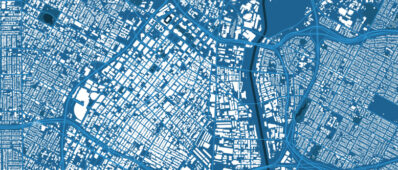published journal article
Archives: Research Products
published journal article
How households use different types of vehicles: A structural driver allocation and usage model
Transportation Research Part A: Policy and Practice
Publication Date
Author(s)
Abstract
The vehicle miles of travel for each vehicle in multi-vehicle households is modelled as a function of household characteristics, vehicle characteristics, and the matches of vehicle to driver in the satisfaction of travel desires. A structural equations model is developed in which principal driver characteristics, as well as vehicle miles of travel, are endogenous. There are links between how each vehicle is used and who in the household is each vehicle’s principal driver. Each vehicle’s usage can then be expressed in reduced-form equations as a function of exogenous household and vehicle type variables for forecasting purpose’s. The model is estimated on a 1993 sample of approximately 2000 multi-vehicle households in California.
Suggested Citation
Thomas F. Golob, Seyoung Kim and Weiping Ren (1996) “How households use different types of vehicles: A structural driver allocation and usage model”, Transportation Research Part A: Policy and Practice, 30(2), pp. 103–118. Available at: 10.1016/0965-8564(95)00022-4.published journal article
Some general results on the optimal ramp control problem
Transportation Research Part C: Emerging Technologies
Publication Date
Author(s)
Abstract
In an effort to relieve peak hour congestion on freeways, various ramp metering algorithms have been employed to regulate the inputs to freeways from entry ramps. In this paper, we consider a freeway system comprised of a freeway section and its entry/exit ramps, and formulate the ramp control problem as a dynamic optimal process to minimize the total time spent in this system. Within this framework, we are able to show when ramp metering is beneficial to the system in terms of total time savings, and when it is not, under the restriction that the controlled freeway has to serve all of its ramp demand, and the traffic flow process follows the rules prescribed by the LWR theory with a triangular flow-density relationship. We also provide solution techniques to the problem and present some preliminary numerical results and empirical validation.
Suggested Citation
H. Zhang, S. G. Ritchie and W. W. Recker (1996) “Some general results on the optimal ramp control problem”, Transportation Research Part C: Emerging Technologies, 4(2), pp. 51–69. Available at: 10.1016/0968-090X(96)00002-2.conference paper
Context-sensitive synthesis of executable functional models of cyber-physical systems
Proceedings of the ACM/IEEE 4th international conference on cyber-physical systems - ICCPS '13
Publication Date
Author(s)
Abstract
The high complexity of cross-domain engineering in combination with the pressure for product innovation, higher quality, time-to-market, and budget constraints make it imperative for companies to use integrated engineering methods and tools. Computer engineering tools are mainly focused on a particular domain and therefore it is difficult to combine different tools for system-level analysis. This paper presents a novel approach and tool for integrated cyber-physical systems (CPS) design based on the FBS (Function-Behavior-State) methodology where multi-domain simulation models capturing both the behavioral-structural aspects of a system are automatically generated from its functional description. Our approach focuses on simulation-enabled FBS models using automatic and context-sensitive mappings of standard Functional Basis elementary functions to simulation components described in physical modeling languages (i.e. Modelica). Using a real electromechanical CPS application we demonstrate how our context-sensitive synthesis approach generates industry-quality executable functional models of higher quality than state-of-the-art approaches using manual mapping.
Suggested Citation
Arquimedes Canedo, Eric Schwarzenbach and Mohammad Abdullah Al Faruque (2013) “Context-sensitive synthesis of executable functional models of cyber-physical systems”, in Proceedings of the ACM/IEEE 4th international conference on cyber-physical systems - ICCPS '13. ACM Press (ACM-IEEE international conference on cyber-physical systems), pp. 99–108. Available at: 10.1145/2502524.2502539.research report
Incentives to promote household ownership of alternative fuel vehicles: Effectiveness and unintended effects
Publication Date
Author(s)
Suggested Citation
Harya S Dillon and Jean-Daniel Saphores (2017) Incentives to promote household ownership of alternative fuel vehicles: Effectiveness and unintended effects.published journal article
A comparison of the economic benefits of urban green spaces estimated with NDVI and with high-resolution land cover data
Landscape Urban Plann.
Publication Date
Author(s)
Suggested Citation
Wei Li, Jean-Daniel M. Saphores and Thomas W. Gillespie (2015) “A comparison of the economic benefits of urban green spaces estimated with NDVI and with high-resolution land cover data”, Landscape Urban Plann., 133, pp. 105–117. Available at: 10.1016/j.landurbplan.2014.09.013.policy brief
SB1 Project Performance: Cost Overruns, Schedule Delays, and Cancellations
Publication Date
Associated Project
Author(s)
Areas of Expertise
Abstract
The Road Repair and Accountability Act of 2017 (Senate Bill 1 or SB 1) aims to improve and enhance California’s transportation infrastructure. Like many infrastructure programs, however, there are concerns with project cost overruns, delays, and cancellations, as these can undermine program goals and negatively impact quality of life in California. This brief highlights key findings from an analysis of quarterly Caltrans SB 1 project reports between 2018 and 2023 to provide insights into project costs, delays, and cancellations.
Suggested Citation
Michael Hyland, Jiangbo (Gabe) Yu and Younghun Bahk (2024) SB1 Project Performance: Cost Overruns, Schedule Delays, and Cancellations. Policy Brief. UC ITS. Available at: https://doi.org/10.7922/g23n21rt.research report
Telecommuting and the Open Future
Publication Date
Associated Project
Author(s)
Research Report
Areas of Expertise
Abstract
The COVID-19 pandemic has generated renewed interest in how telecommuting can alter the workings of our cities and regions, but there is little guidance on how to align planning practice with the new reality. This report synthesizes the research on telecommuting and its consequences to help planners better understand what effects may occur from the proliferation of telecommuting and what lessons can be drawn from research findings. Emphasis is on the broad relevance of telecommuting to many domains of planning, including housing, land use, community development, and inclusive place-making, while attention is paid to changes in travel demand, vehicle miles traveled (VMT), and greenhouse gas emissions. The research suggests that telecommuting can occur in a variety of ways, and its impacts are largely dependent not only on the type/schedule of telecommuting but on the built environment, transit accessibility, and other amenities/opportunities the location provides. The varying impacts reported in the research can be seen as an encouragement for planners to actively create a better future rather than merely responding to the rise of telecommuting. Given the breadth of telecommuting’s impacts, systematic coordination across various planning domains will be increasingly important. This report also calls for collaboration across cities to guide the ongoing transformation induced by telecommuting not in a way that leads to more residential segregation but in a way that provides more sustainable and inclusive communities.
Suggested Citation
Alex Okashita, Harold Arzate and Jae Hong Kim (2024) Telecommuting and the Open Future. Research Report UC-ITS-2022-41. UC ITS. Available at: https://doi.org/10.7922/g2r49p3j.published journal article
Determinants of air cargo traffic in California
Transportation Research Part A: Policy and Practice
Publication Date
Author(s)
Suggested Citation
Paulos Ashebir Lakew and Yeow Chern Andre Tok (2015) “Determinants of air cargo traffic in California”, Transportation Research Part A: Policy and Practice, 80, pp. 134–150. Available at: 10.1016/j.tra.2015.07.005.published journal article
Performance evaluation for bus transit
Transportation Research Part A: General
Publication Date
Author(s)
Abstract
Performance analysis has gained increased attention now that transit organizations are emphasizing efficiency objectives. Debates over both the number of indicators required and their method of selection are reviewed. Research upon which this paper is based uses FY 1980 Section 15 data to first identify and then test a set of performance indicators which are useful for evaluation of fixed route, motor bus transit. Four parallel data sets, based on transformations of the original data, and several exploratory factor analyses were used to detect the underlying structure of the data. Rigorous testing verified that the structure represented the most salient performance dimensions. A small subset of seven performance indicators was identified and tested as representative of these underlying dimensions. These indicators can be used together or individually to assess transit performance for a single system or for cross-sectional comparisons.

